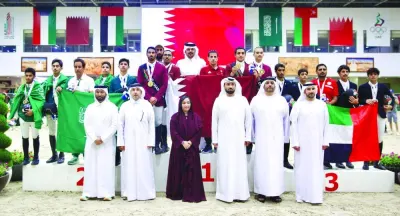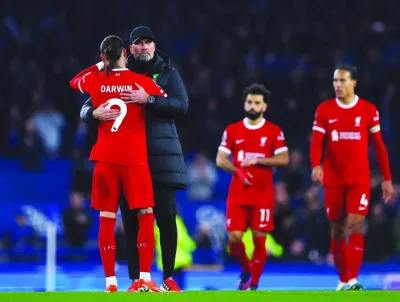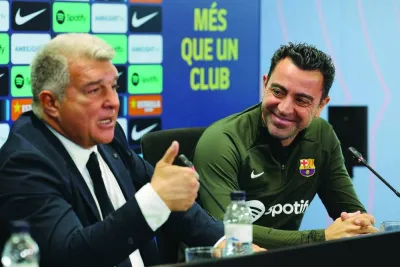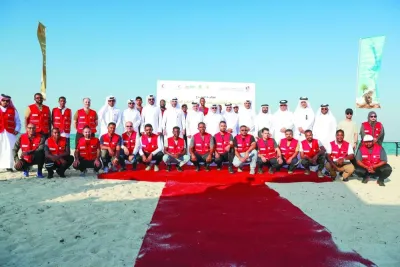State-run energy firm Petrobras has hit growing resistance from Indigenous groups and government agencies to its premier exploration project, which would open the most promising part of Brazil’s northern coast to oil drilling.Environmental agency Ibama denied Petrobras a licence for exploratory drilling offshore in the Foz do Amazonas area last year, citing possible impacts on Indigenous groups and the sensitive coastal biome. But a Petrobras appeal for Ibama to reverse its decision has drawn powerful political backing.President Luiz Inacio Lula da Silva said in September that Brazil should be able to “research” the region’s potential resources, given the national interest. Energy Minister Alexandre Silveira last week told journalists that it is “Brazil’s right to know the potential” of the offshore fields.That has bolstered bullish rhetoric from Petrobras about its chances of getting a licence to drill in the blocks off the coast of Amapa state.“Get ready Amapa, because we are arriving,” Petrobras CEO Jean Paul Prates told local politicians and oil executives at an event last month promoting offshore exploration along the northern coast in an area known as Equatorial Margin. He called it “perhaps the last frontier of the oil era for Brazil.”He has said he expects to start drilling in the second half of this year or sooner in the most promising part of the Equatorial Margin, named the Foz do Amazonas basin, for the mouth of the Amazon River several hundred kilometres away.Foz de Amazonas shares geology with the coast of nearby Guyana, where Exxon is developing huge fields.Ibama chief Rodrigo Agostinho said in November that a decision would be made in early 2024, although labour disputes at the agency have since slowed the pace of environmental licensing.Visits to four Indigenous villages, interviews with over a dozen local leaders, and previously unreported documents show organised opposition mounting to Petrobras’ attempt to reverse the halt on exploratory drilling.Petrobras has drawn fresh government scrutiny. Indigenous affairs agency Funai asked Ibama regulators in December to run several more studies to assess impacts, according to a December 11 government memo from Funai to Ibama obtained in a freedom of information request. The proposed studies would have to be done before Ibama can decide whether to accept the Petrobras appeal.In July 2022, the Council of Chieftains of the Indigenous People of Oiapoque (CCPIO), an umbrella group representing more than 60 Indigenous villages in the area, asked federal prosecutors to get involved, denouncing an alleged violation of their rights.Brazilian prosecutors have a mandate to protect Indigenous peoples, often taking their side in disputes with firms or federal and state governments. In September 2022 they recommended that Ibama not issue the licence before a formal consultation of the local communities.Records from the prosecutors’ preliminary investigation show that in December 2023, CCPIO asked them to broker a 13-month formal consultation with Petrobras about Indigenous views on the project.The consultation process, along with studies proposed by Funai, would push a decision into 2025 when Brazil will host the COP30 climate change summit in the Amazon city of Belem, which could make it more politically difficult to approve drilling, a person close to CCPIO said.Minutes from a June 2023 meeting between Petrobras, CCPIO leaders and prosecutors show the company offered to consult local communities about eventual commercial oil production in the area, if Ibama requests it, but did not commit to a consultation before drilling exploratory wells. Asked about Indigenous leaders’ calls for immediate consultations, Petrobras said in a statement that the time for such requests has passed.“The definition of whether or not it is necessary to consult Indigenous peoples and/or traditional communities takes place at the initial stage of the environmental licensing process,” Petrobras said. Ibama has not yet replied to the recommendation by Indigenous affairs agency Funai late last year for more assessments of the effects of Petrobras’ exploration plans, according to an April 3 Funai document.Both agencies did not reply to requests for comment. CCPIO and prosecutors said a consultation must be made before Ibama issues a license to drill.The drilling standoff has created a fault line in Lula’s government, which is balancing his vows to protect the Amazon and its Indigenous people with the interests of Petrobras and political allies that stand to reap the benefits of a new oil-producing region.Silveira, the energy minister, has said that a single Foz de Amazonas block off the coast of Amapa state could yield more than 5.6bn barrels of oil, which would be the company’s biggest discovery in over a decade.In its appeal to Ibama, the company said that exploration will have no negative impact on local communities.“We ratify the understanding that there is no direct impact of the temporary activity of drilling a well 175km from the coast on Indigenous communities,” Petrobras said.Local people and some environmentalists warn that drilling could threaten coastal mangroves and vast wetlands rich with fish and plant life, while disrupting the lives of the 8,000 Indigenous people in Oiapoque, on Brazil’s far northern coast.The CCPIO, the highest Indigenous authority in Oiapoque, is composed of more than 60 caciques, or chieftains, representing over 8,000 people. They do not oppose the search for oil per se, but invoke what they say is a right to prior consultation by Petrobras, with supervision from the federal prosecutors’ office and Funai. The International Labour Organisation convention 169, which Brazil signed, says that governments must consult Indigenous and tribal peoples through their representative institutions, whenever considering legislative or administrative measures that may affect them directly. The plans to drill are already changing Oiapoque. Waves of migrant workers have arrived looking for jobs in an oil industry that does not yet exist, state lawmaker Inacio Monteiro said.Monteiro said he meets often with Indigenous constituents, talking to them about the benefits that Petrobras could bring to Oiapoque, including jobs, tax revenue and social programmes.Yet CCPIO and its allies have become increasingly vocal with their resistance as Petrobras garners support for its appeal, including at the COP28 climate summit in December, where Luene Karipuna told a panel that Petrobras and local politicians had tried to silence her people.“Strategically, this prior consultation is our only safety net,” 25-year-old Karipuna, who is studying to be a teacher, said near her home in the Santa Izabel village, where marshes fill with seawater at certain times of the year. When the rivers run low, tides bring in saltwater fish the villagers eat, but some fear it could just as easily bring oil spills.Indigenous leaders said a full-court press from local politicians in support of Petrobras was on display at a May 2023 public hearing that Monteiro, the state lawmaker, called just days after Petrobras’ licence was denied.Amapa’s political powerbrokers, including key Lula allies, rallied within days at Oiapoque’s town hall for the hearing to promote Petrobras’ plans to drill.At the event, one man in a white polo shirt and a feathered headdress, Ramon Karipuna told the crowd that Indigenous people were in favour of drilling, according to minutes of the meeting.Karipuna said he spoke for the co-ordinator of the CCPIO council of chieftains, who was absent for “health reasons.”Petrobras later cited Karipuna’s endorsement in its appeal of the denied drilling licence and described him as a “CCPIO representative.”However, CCPIO co-ordinator Cacique Edmilson Oliveira said he was not sick that day. CCPIO had refused to take part in the hastily summoned event, according to a May 18 letter sent in response to Monteiro’s invitation to the hearing.“This is very concerning. That’s why we are saying that we already feel threatened,” Oliveira said, accusing Petrobras of distorting the views of Indigenous leaders. “We never sat down and reached an agreement for approval.”In a telephone interview, Karipuna confirmed he worked at the town hall and that he is not a member of CCPIO — even though Petrobras used his words as its main argument to Ibama that Indigenous representatives supported drilling. He also backed away from his comments in favour of drilling.“To this day many people have doubts about this Petrobras business,” he said.Asked about its mischaracterisation of Karipuna, Petrobras cited the minutes of the May 2023 meeting, without elaborating. — Reuters












